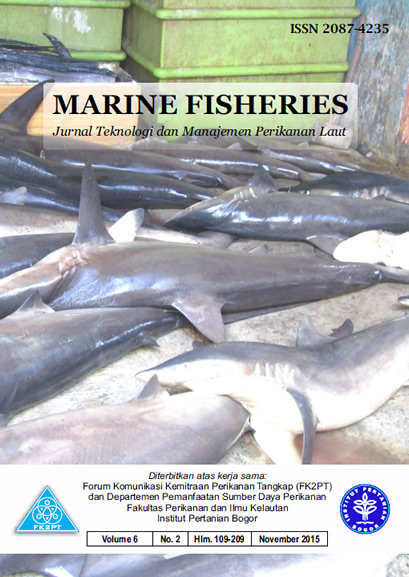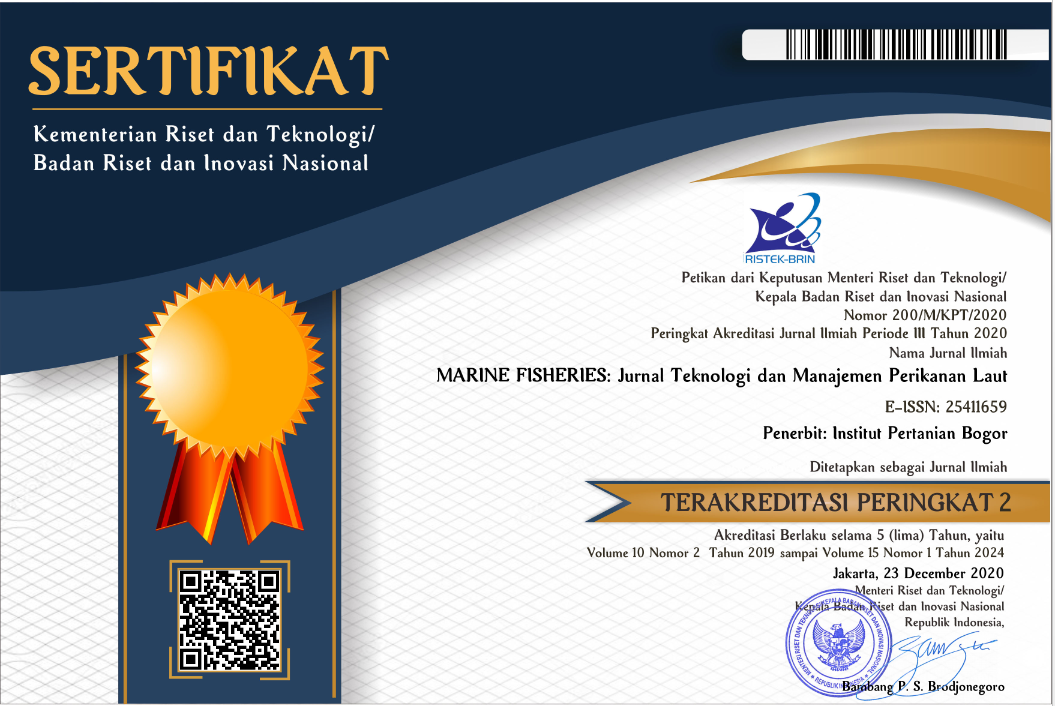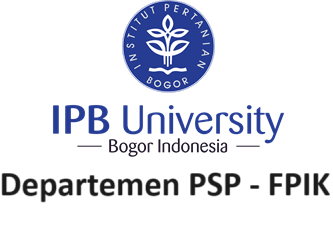KELIMPAHAN ZOOPLANKTON DAN BIOMASSA IKAN TERI (Stolephorus spp.) PADA BAGAN DI PERAIRAN KWATISORE TELUK CENDERAWASIH PAPUA (Abundance of Zooplankton and Biomass of Anchovy (Stolephorus spp.) of Liftnet at Kwatisore Bay, Cendrawasih Gulf, Papua)
Abstract
ABSTRACTMillions of organisms can be found in the Cenderawasih Gulf National Park area, especially in the waters of the Kwatisore Bay, Nabire and has been well-known to almost all over the world. Large zooplankton is an important food for migrated fish larvae and all kinds of fish including anchovies. Anchovy is the food of large and small pelagic fish groups. Groups of fish that use plankton as food were included anchovy. The main catch product of lift net at the Kwatisore bay is anchovy (Stolephorus spp.). This study aims to assess the level of availability of anchovy in relation to the abundance of zooplankton as food and to analyze the influence of anchovy fishing activities with lift net fishing gear. The results were obtained 51 species of zooplankton, which consists of 44 types holoplankton and 7 types of meroplankton. There were 17 species of zooplankton were found in the stomach of anchovy with the subgroup dominated by copepods (73.51 %). Among 17 species of zooplankton there 2 types that were found in all four sampling periods, namely Calanus sp. 2 and Euterpina acutifrons. There is a relationship between the abundance of individual zooplankton in the waters of the anchovy biomass and also between the abundance of zooplankton and biomass of anchovy.
Keywords: abundance of zooplankton, biomass of anchovy, lift net at Kwatisore
-------
ABSTRAK
Jutaan organisme dapat ditemukan dalam kawasan Taman Nasional Teluk Cenderawasih khususnya di perairan Kwatisore, Nabire dan telah terkenal sampai hampir ke seluruh dunia. Zooplankton berukuran besar merupakan makanan penting bagi ikan-ikan yang bermigrasi dan larva semua jenis ikan termasuk didalamnya ikan teri. Ikan teri merupakan makanan dari kelompok ikan pelagis besar dan kecil. Kelompok ikan-ikan yang banyak memanfaatkan plankton dari kelompok ikan pelagis kecil diantaranya ikan teri. Hasil tangkapan utama bagan penangkap ikan pelagis kecil di perairan Kwatisore ialah jenis teri (Stolephorus sp.). Tujuan penelitian ini adalah untuk mengkaji tingkat ketersediaan ikan teri dalam kaitannya dengan kelimpahan zooplankton sebagai makanannya serta menganalisis pengaruh dari aktivitas penangkapan ikan teri dengan alat tangkap bagan. Secara keseluruhan dari seluruh stasiun dalam setiap periode sampling, diperoleh 51 jenis zooplankton yang terdiri atas 44 jenis holoplankton dan 7 jenis meroplankton. Terdapat 17 jenis zooplankton yang ditemukan dalam lambung ikan teri dengan didominasi oleh Sub-grup Copepoda (73,51%). Diantara ke-17 jenis zooplankton tersebut terdapat 2 jenis yang ditemukan pada keempat periode sampling yaitu Calanus Sp.2 dan Euterpina acutifrons. Hasil analisis regresi linier antara biomassa ikan teri hasil tangkapan bagan dan kelimpahan maupun antara biomassa ikan teri hasil tangkapan bagan dan jumlah jenis zooplankton menunjukkan adanya korelasi positif.
Kata kunci: kelimpahan zooplankton, biomassa ikan teri, bagan di Kwatisore
Downloads
Published
2016-10-07
How to Cite
DinisiaA., AdiwilagaE. M., & Yonvitner. (2016). KELIMPAHAN ZOOPLANKTON DAN BIOMASSA IKAN TERI (Stolephorus spp.) PADA BAGAN DI PERAIRAN KWATISORE TELUK CENDERAWASIH PAPUA (Abundance of Zooplankton and Biomass of Anchovy (Stolephorus spp.) of Liftnet at Kwatisore Bay, Cendrawasih Gulf, Papua). Marine Fisheries : Journal of Marine Fisheries Technology and Management, 6(2), 143-154. https://doi.org/10.29244/jmf.6.2.143-154
Section
Articles
Author(s) who published in this journal agree to following terms:
- Author(s) must understand and agree that the copyright script in published owned by the Marine Fisheries Journal. The copyright includes reproducing and selling the manuscript to all parties.
- Everyone can cite every manuscript published in Marine Fisheries for educational purposes, with the author's name and the Marine Fisheries Journal on reference.









